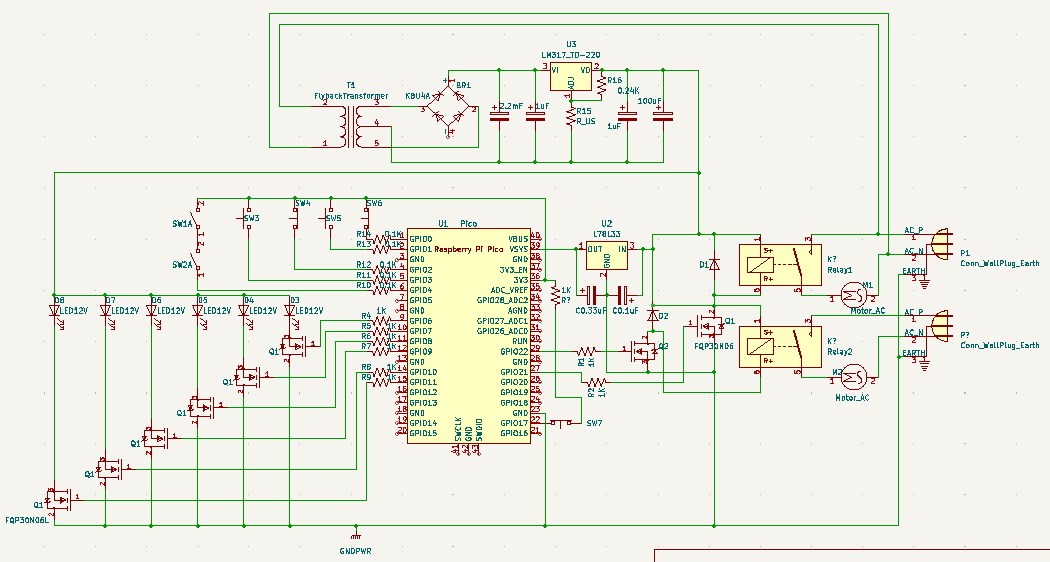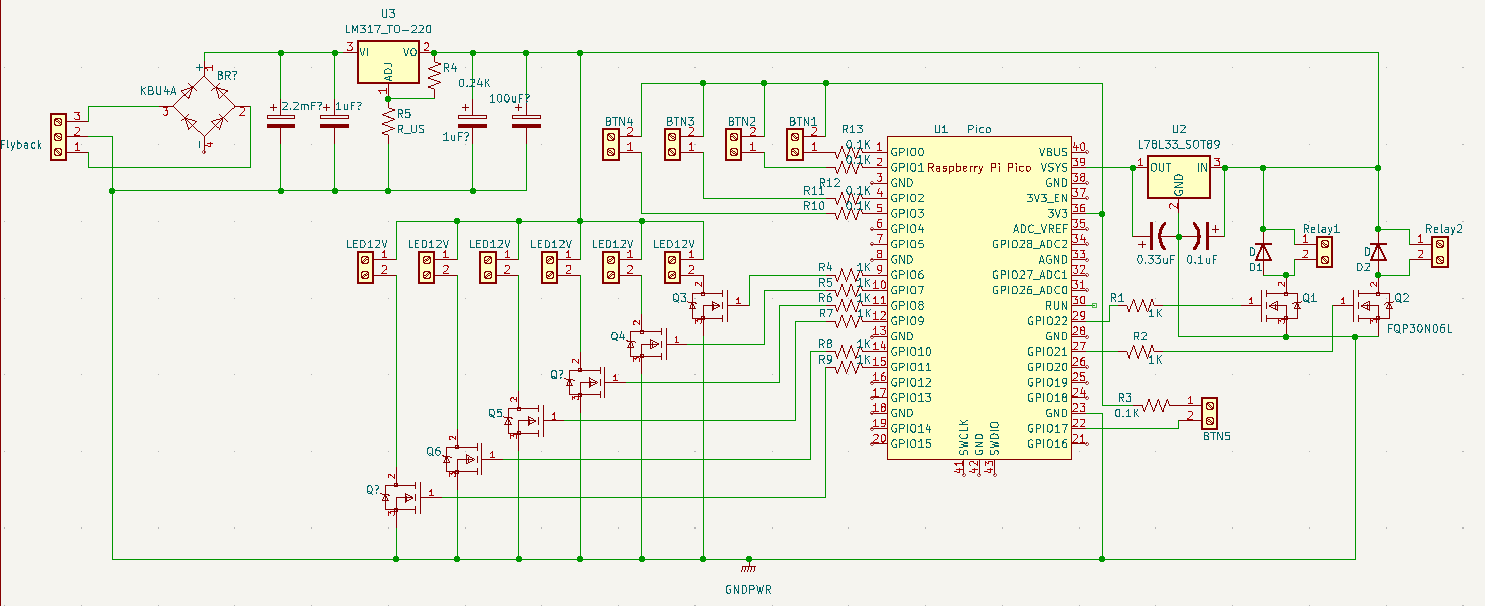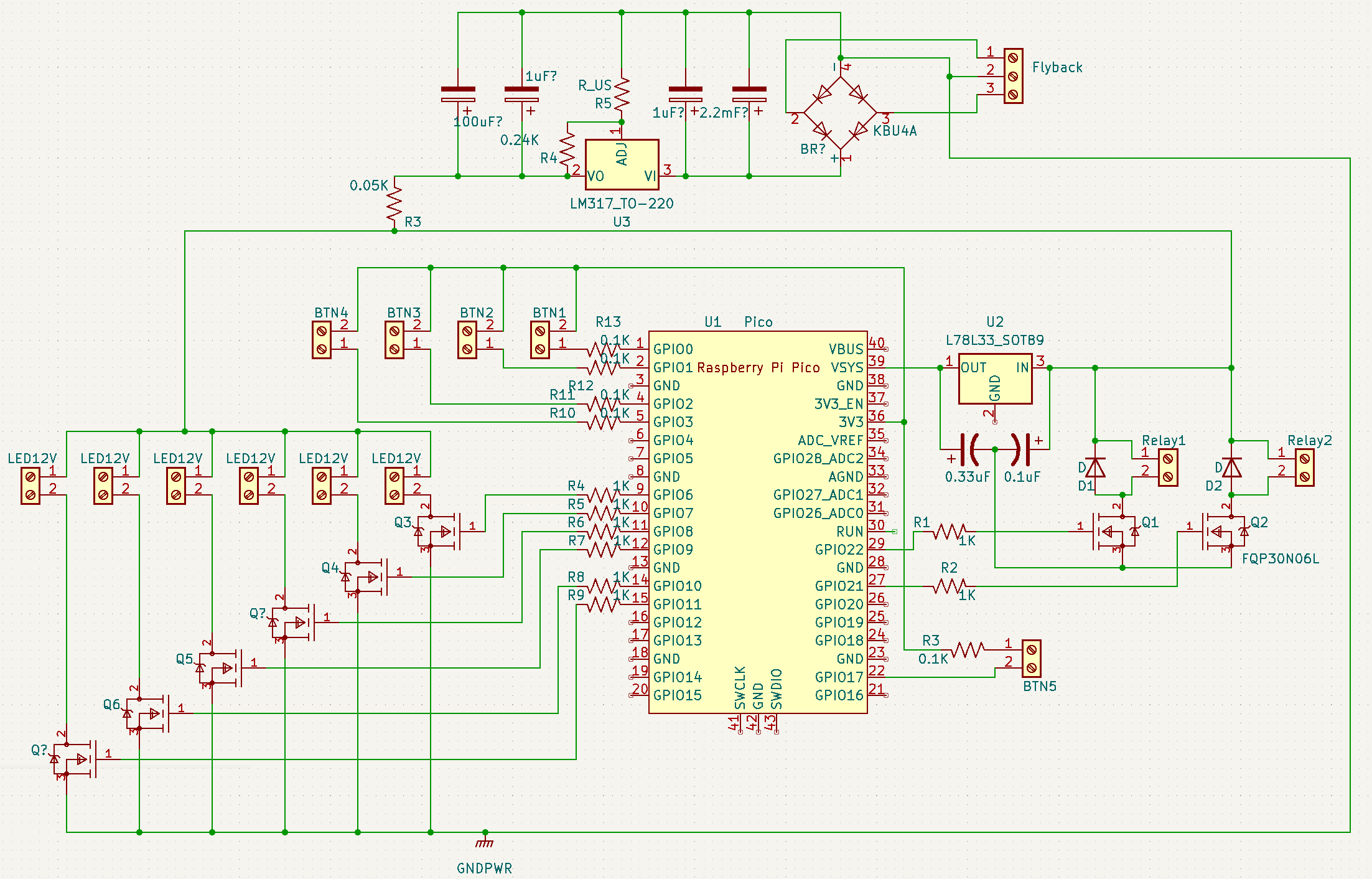Updated Again:
I have been working on this project for a few weeks now, with an end goal of having a control panel to power our two 120 V induction motors and 6 lights on the control panel using two 120 V outlets. The motors can take a maximum current of 8.8 A so I am attempting to use some current from one of the outlets to power a 12 V converter. This part of the circuit uses a flyback in conjunction with a bridge rectifier, capacitors, and a LM317 voltage regulator to get a 12 VDC output. This is needed for the LEDs I am using (which have a voltage rating of 12 V) and for the coils of the relays that I've chosen to use to activate the motors.
The only thing I'm wondering/concerned about with this part is its longevity. Will it have any trouble running for hours at a time? And if so, what actions should I take to rectify this?
I redid the diagram in a more readable and understandable way, and have remade the PCB board with a ground plate on both sides connected to all of the 12V ground, and the ground from the base of the flyback. I also routed a ground from the pico to theground plane, and reoriented the power supply. Is this correct? Below is the full schematic without screw terminals:
For the PCB boards, I believe I have done them correctly. I think I may need to space the FQP30N06L Mosfets apart more in order to fit the heat sinks, but other than that I think it should work. Would I need to do anything with the ground pin of the second 120V outlet, since im already connected to ground in a way? Should I add another screw terminal set and connect both grounds directly, or would that create a ground loop?
I also had a few additional questions. If these push buttons that I am using are rated for 660 V and 10 A would they even work with 3.3 V? At this point im considering using smaller ones. Lastly, is my spacing in between the ground and 12V traces going to be an issue if its too small, and if so how would I go about calculating that?










